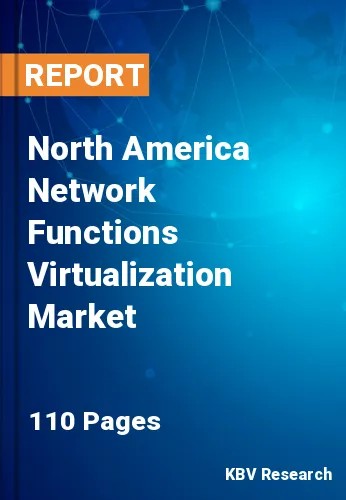The North America Network Functions Virtualization Market would witness market growth of 24.2% CAGR during the forecast period (2022-2028).
Virtual machines utilize software to carry out the same networking tasks as conventional hardware. Software, rather than hardware, handles load balancing, routing, and firewall security. Network engineers can automate the provisioning of the virtual network and program all of its diverse components using a hypervisor or software-defined networking controller. IT managers may quickly set a number of network functionality components through a single pane of glass.
The use of the phrase carrier grade to denote equipment displaying this high dependability and performance factor reflects the customary strict criteria for stability, protocol conformance, and quality established by the telecommunications sector while developing products. Additionally, the emergence of fierce competition for communication service offerings via agile businesses operating on the public Internet at scale, like Google Talk, Skype, and Netflix.
The adoption of network functions virtualization services and solutions are majorly increasing in the region. The United States is one of the world's largest markets for telecommunications services. While the growth in the productivity have been robust in the country, the employment in the sector has remained comparatively static. Between 1982 and 1992, the value added per employee hour increased at a 6.1% yearly pace. Over the same time period, gross output increased by 6.4% per employee. In terms of total factor productivity, the United States' telecommunications services sector outperforms various other countries.
The US market dominated the North America Network Functions Virtualization Market by Country 2021, and would continue to be a dominant market till 2028; thereby, achieving a market value of $23,768.8 million by 2028.The Canada market is poised to grow at a CAGR of 27% during (2022 - 2028). Additionally, The Mexico market would witness a CAGR of 25.9% during (2022 - 2028).
Based on Component, the market is segmented into Solutions and Services. Based on End User, the market is segmented into Service Providers, Data Centers and Enterprises. Based on Enterprises Type, the market is segmented into BFSI, Manufacturing, Government & Defense, Healthcare, Retail, Education and Others. Based on Organization Size, the market is segmented into Large Enterprises and Small & Medium Enterprises. Based on Application, the market is segmented into Virtual Appliance and Core Network. Based on countries, the market is segmented into U.S., Mexico, Canada, and Rest of North America.
Free Valuable Insights: The Global Network Functions Virtualization Market is Predict to reach $94.1 Billion by 2028, at a CAGR of 24.8%
The market research report covers the analysis of key stake holders of the market. Key companies profiled in the report include Intel Corporation, Oracle Corporation, Huawei Technologies Co., Ltd. (Huawei Investment & Holding Co., Ltd.), Ericsson AB, Hewlett Packard Enterprise Company, Juniper Networks, Inc., NEC Corporation, Amdocs Limited, F5 Networks, Inc, and Alcatel-Lucent Enterprise (China Huaxin Post and Telecom Technologies Co., Limited).
By Component
By End User
By Organization Size
By Application
By Country
Our team of dedicated experts can provide you with attractive expansion opportunities for your business.

